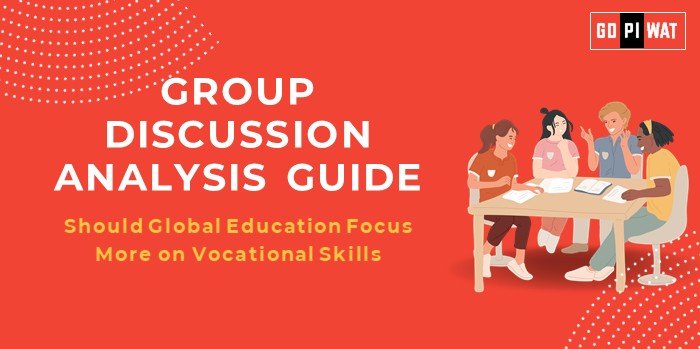📋 Should Global Education Focus More on Vocational Skills?
🌐Should Global Education Focus More on Vocational Skills?
🔎 Introduction to the Topic
Global education systems are often critiqued for emphasizing theoretical knowledge over practical, employable skills. As automation and technological disruptions reshape industries, vocational training emerges as a critical tool for preparing students for the future of work.
Topic Background: Vocational education focuses on specific trades or careers and has been a cornerstone of industrial and technological development. However, in many countries, traditional views favoring academic degrees often overshadow vocational pathways.
📊 Quick Facts and Key Statistics
🌍 Youth Unemployment: 14.9% of global youth are unemployed despite rising education levels (ILO, 2023).
💼 Economic Impact: Countries with robust vocational systems, like Germany, report lower unemployment rates (3.4% in 2023).
🛠️ Future Jobs: 75% of job growth by 2030 will require technical or vocational skills (McKinsey, 2023).
👥 Stakeholders and Their Roles
- 🏛️ Governments: Develop policies to integrate vocational training into national curricula.
- 🏫 Educational Institutions: Offer tailored programs aligned with industry needs.
- 🏢 Industries: Provide internships, apprenticeships, and real-world training opportunities.
- 👪 Parents and Students: Shift perceptions to value vocational education as equal to traditional academic pathways.
🏆 Achievements and ⚠️ Challenges
🎯 Achievements
- 🚀 Economic Growth: Germany’s and Switzerland’s vocational systems drive innovation and productivity.
- 🛠️ Skill Development: India’s Skill India mission has trained over 50 million individuals.
- 👨💼 Job Creation: Vocational education significantly reduces youth unemployment in developing economies.
⚠️ Challenges
- 🎓 Perception Bias: Vocational education is often seen as inferior to academic degrees.
- 🏙️ Limited Accessibility: Rural regions face shortages of vocational training facilities.
- 🔄 Evolving Industry Needs: Outdated curriculums struggle to match technological advancements.
🌍 Global Comparisons
- 🇩🇪 Germany: The dual education system combines classroom learning with on-the-job apprenticeships, keeping youth unemployment at 5.3%.
- 🇸🇬 Singapore: Encourages lifelong learning programs for vocational skills at all career stages.
🗣️ Structured Arguments for Discussion
- ✅ Supporting Stance: “Vocational education addresses skill shortages and prepares students for immediate employment.”
- ❌ Opposing Stance: “Overemphasis on vocational skills may limit intellectual and creative development.”
- ⚖️ Balanced Perspective: “A hybrid model integrating vocational training with academic learning ensures holistic development.”
🚀 Effective Discussion Approaches
- 📈 Statistical Impact: “With 87% of companies reporting skill gaps, vocational training becomes a critical need for workforce readiness.”
- 📝 Case Study: “Germany’s dual education system demonstrates how aligning vocational training with industry needs drives economic growth.”
🛠️ Strategic Analysis of Strengths and Weaknesses
- ✅ Strengths: Reduces unemployment, aligns education with market needs, and builds career-ready skills.
- ⚠️ Weaknesses: Limited scalability, perception biases, and outdated curriculums.
- 🌐 Opportunities: EdTech platforms, global partnerships, and AI-driven skill programs.
- ❌ Threats: Resistance from traditionalists and the risk of rapid technological changes outpacing training programs.
💼 Connecting with B-School Applications
- 📊 Real-World Applications: Explore case studies of industries transformed through vocational education programs.
- ❓ Sample Interview Questions:
– “What role does vocational education play in economic development?”
– “How can vocational training be integrated into traditional curriculums?” - 💡 Insights for B-School Students:
– Understand the importance of skill-based learning for corporate success.
– Explore opportunities to work with organizations bridging skill gaps through vocational training.
📝 Sample Short Essays
⚖️ Balanced Perspective:
“Vocational education provides practical, job-ready skills essential for today’s workforce. However, integrating theoretical knowledge with skill-based learning ensures well-rounded, adaptable individuals equipped for long-term growth.”
💡 Solution-Oriented:
“To bridge the global skills gap, education systems must prioritize vocational training alongside traditional subjects. Public-private partnerships and modernized curriculums are key to ensuring scalability and success.”
🌍 Global Comparison:
“Countries like Germany and Singapore demonstrate the economic benefits of vocational education. Adopting similar models tailored to local needs can help nations reduce unemployment and drive innovation.”


